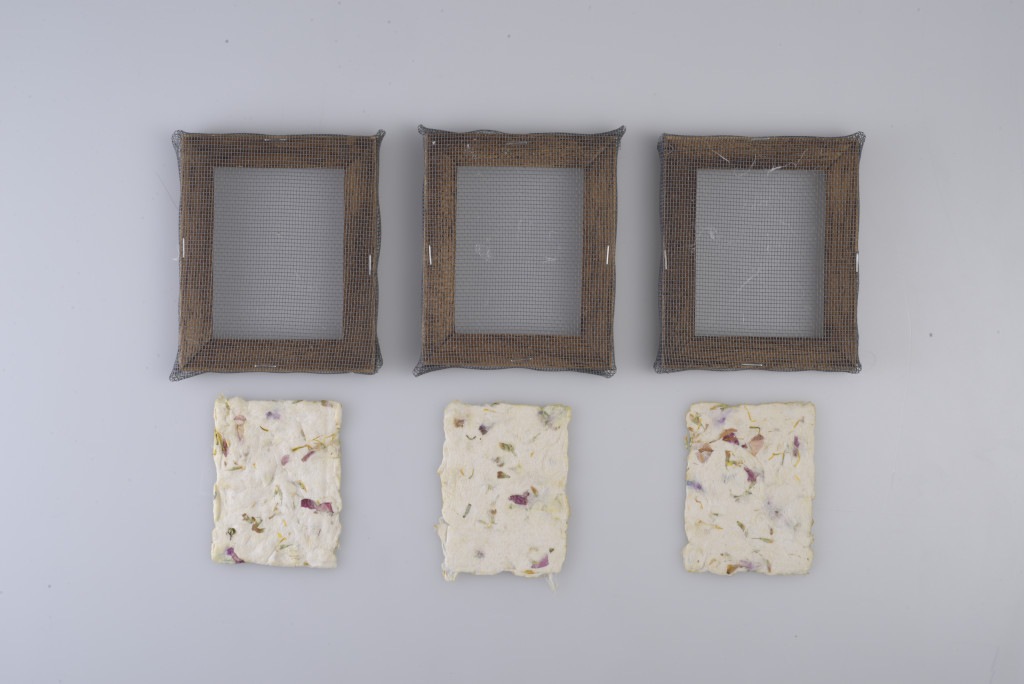Hempbased materials
MA Practice Based Course
2022
semester

Starting from the semester’s argument, we researched fibres of different types, considering that the experimentation is integrated into our main project. As our project includes the construction of a beehive, the material characteristics such as thermal insulation, weight, weather resistance, sterility and local resources were crucial. These criteria led us to think about hemp as an optimal raw material, considering the long tradition of local hemp cultivation and the use of hemp fibres in the South Tyrolean territory and history.
Starting from hemp fibres, we have outlined three main applications in the context of our project: hemp yarn, hemp paper and hempcrete.
Hemp yarn
We laser-cut hand-spinner thinking about manual spinning techniques to process the raw hemp fibres into yarn. We thought about a possible textile that could be used for structural elements of the beehive.

Hemp paper
After the meeting with Valentine Troi, we discovered that cellulose could be extracted from hemp fibres. Following, we used hemp cellulose to produce hemp paper. A scoop frame was essential for this process – therefore, we built our frames to make paper. We used the paper to create business cards that promote the project itself.

Hempcrete
Based on previous experiences with hempcrete, we decided to implement it as an insulation element in our beehive. One of the critical aspects of our beehive is the weight, and we questioned our material choice at this point. We experimented with pannels and sheets to create various mixtures and sizes to find the best material composition.

Wool
In the prototyping phase, we were confronted with the actual weight of our beehive. This moment of testing led us to consider less heavy local materials with similar characteristics as hempcrete. While reflecting on alternative fibres that could fit our projects’ needs, we remembered the Bolzano Textile Festival. We got in touch with a young producer who uses south-tyrolean wool to felt, considering that the wool quality is not adapted to produce textile for garments. After some research, we found a local producer that works on natural wool insulation for the building industry. This learning resulted in our sandwich panel. The central layer is composed of wool and the outer ones of spruce to guarantee beehive to be adapted for the positioning on the rooftop and weather influences.









